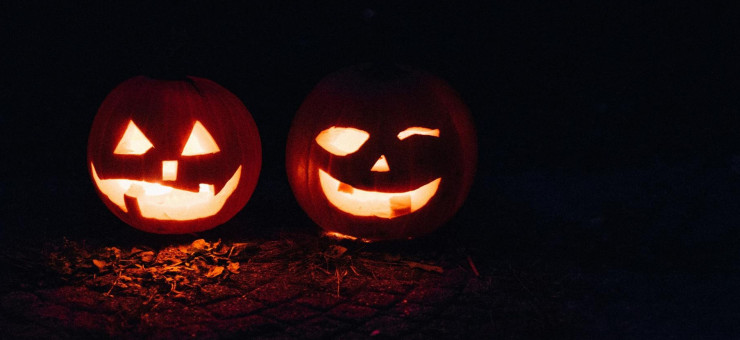
How to Help Pets Have a Spook-Free Halloween
Unfamiliar bangs, flashing lights, and strangers at the door create a night of unpredictable sounds and sights that can trigger stress and fear-related behaviours.
Research shows that nearly half of dogs show fear towards sudden sounds, and that early-life experiences strongly shape how well they cope (van Herwijnen et al., 2024). Taking a proactive approach – using early management and behaviour planning, rather than waiting for distress to occur - makes the greatest difference to welfare outcomes (Riemer, 2023).
Planning ahead
The message for animal guardians is to prepare early. Create a quiet, secure space where pets can retreat before festivities begin. Close curtains, dim the lights, and use gentle background sound, such as talk radio or classical music, to help mask external noises. If your pet becomes anxious around the door, consider opting out of the festivities by disabling the doorbell, covering the knocker, or placing a polite sign such as “Please do not knock/ring - dog in training”. Small steps like these can reduce vocalisation and stress linked to front door activity.
Support positive associations
You can use Halloween front door activity as a training opportunity if your pet can cope with sudden knocks or rings. When knocks or doorbells sound, calmly guide your pet to their safe area and scatter a few treats for them to find. This uses counter-conditioning – pairing something unfamiliar with something enjoyable – to change how animals feel about those events over time. See my Rule of 1/3s for Food to help you learn how to spread out your pet’s daily food allowance, strategically and smartly.
Keep celebrations pet-appropriate
Costumes may look entertaining, yet for many animals, they restrict movement and can interfere with body language. Welfare experts advise against dressing up pets, since this often heightens stress rather than tolerance. Keep sweets and decorations out of reach, and make sure property boundaries are secure, and confirm that identification tags and microchip details are up to date in case of accidental escape. Walk dogs before dusk, when streets are quieter, and avoid leaving pets unsupervised in the garden as trick-or-treaters pass.

With early planning, calm environments, and clear routines, we can safeguard both emotional and physical welfare, avoiding a fright night altogether.
Author: Hanne Grice is an award-winning ABTC-registered Clinical Animal Behaviourist, certified trainer and lecturer. www.hannegrice.com. In addition Hanne Grice is an approved iPET Network PDR Training Provider.
References:
· van Herwijnen, I.R., Vinke, C.M., Arndt, S.S., and Roulaux, P.E.M. (2024) Firework Aversion in Cats and Dogs as Reported by Dutch Animal Owners. Veterinary and Animal Science, 26, 100402. https://doi.org/10.1016/j.vas.2024.100402
· Riemer, S. (2023) Therapy and Prevention of Noise Fears in Dogs - A Review of the Current Evidence for Practitioners. Animals, 13(23), 3664. https://doi.org/10.3390/ani13233664
